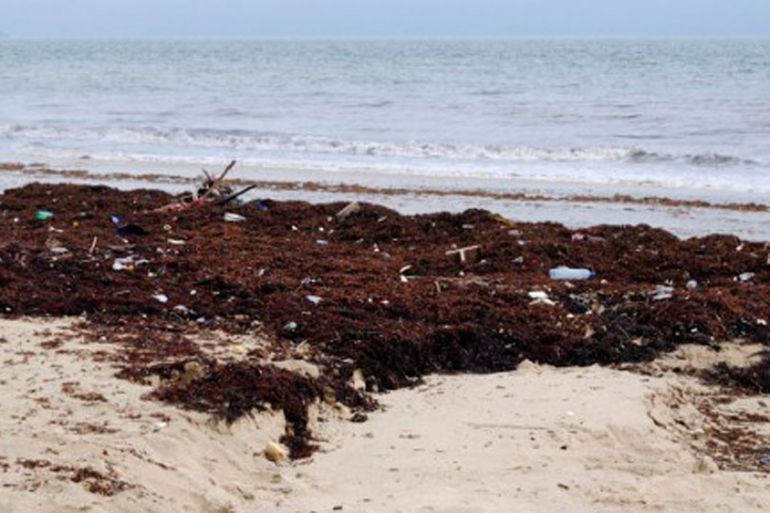Seaweed smothers beaches in Sierra Leone
Choking algae inundates Sierra Leone sands, posing a threat to marine life and the tourism and fishing sectors.

A thick carpet of smelly seaweed has smothered beaches in Sierra Leone, threatening marine life as well as the country’s tourism and fishing industries.
Sierra Leone’s white sand beaches, long admired the world over, used to host around 30,000 tourists a year until the civil war in 1991.
Keep reading
list of 4 itemsRainfall set to help crews battling wildfire near Canada’s Fort McMurray
How India is racing against time to save the endangered red panda
The Last Shark
Those numbers dropped considerably after the outbreak of the conflict – but the beaches remained the same.
That was until the influx of seaweed a week ago, when a putrid beige carpet began covering the sands.
A daily clearing exercise using dredgers has been under way since, but the seaweed is still collecting in large volumes.
The stench is keeping tourists away and the deposits are affecting the fishing industry.
“It is difficult for me to face my family, as I can see the disappointment on the faces of my wife and four children when I return home in the evening without a catch,” local fisherman Mustapha Koroma told the AFP news agency.
“We cannot even cast our nets as all we fish out are seaweeds with tormenting smells.”
This is not the first time Sierra Leone has been inundated by the smelly seaweed. Every summer for the past few years, there has been an influx.
Yet Sierra Leone is not the only country to have been hit by large volumes of seaweed.
Since 2011, many beaches in Mexico, the Caribbean and along the south coast of West Africa have been affected by a mass of it.
The seaweed is sargassum, a brown algae which forms large floating mats. It usually blooms in the Sargasso Sea, a 3m sq km body of water in the north Atlantic, and is a critical habitat for many marine species such as mahi-mahi, tuna, eels and sea turtles.
Sargassum has always washed up along tropical shores in small amounts, but it becomes a problem when it occurs in large amounts.
Severe inundations, known as “harmful algae blooms”, can wipe out fish populations, harm tourism and cause coastal dead zones.
2011 is thought to be the first time that an inundation happened of such a great scale that beaches from Mexico, the Caribbean and West Africa were all affected.
Since then, however, it has been a recurring problem and 2015 saw a particularly intense inundation.
Jim Franks, a marine scientist from the Gulf Coast Research Laboratory at the University of Southern Mississippi, believes that the seaweed is now proliferating nearer the Equator and is being swept on to beaches on both sides of the Atlantic.
Franks suggests that the change in habitat could be owing to the increase in the temperature of the ocean or perhaps a change in nutrients in dust swept into the sea from Africa.
As scientists race to find the explanation for the blooms, the locals in Sierra Leone are desperately trying to clear the debris.